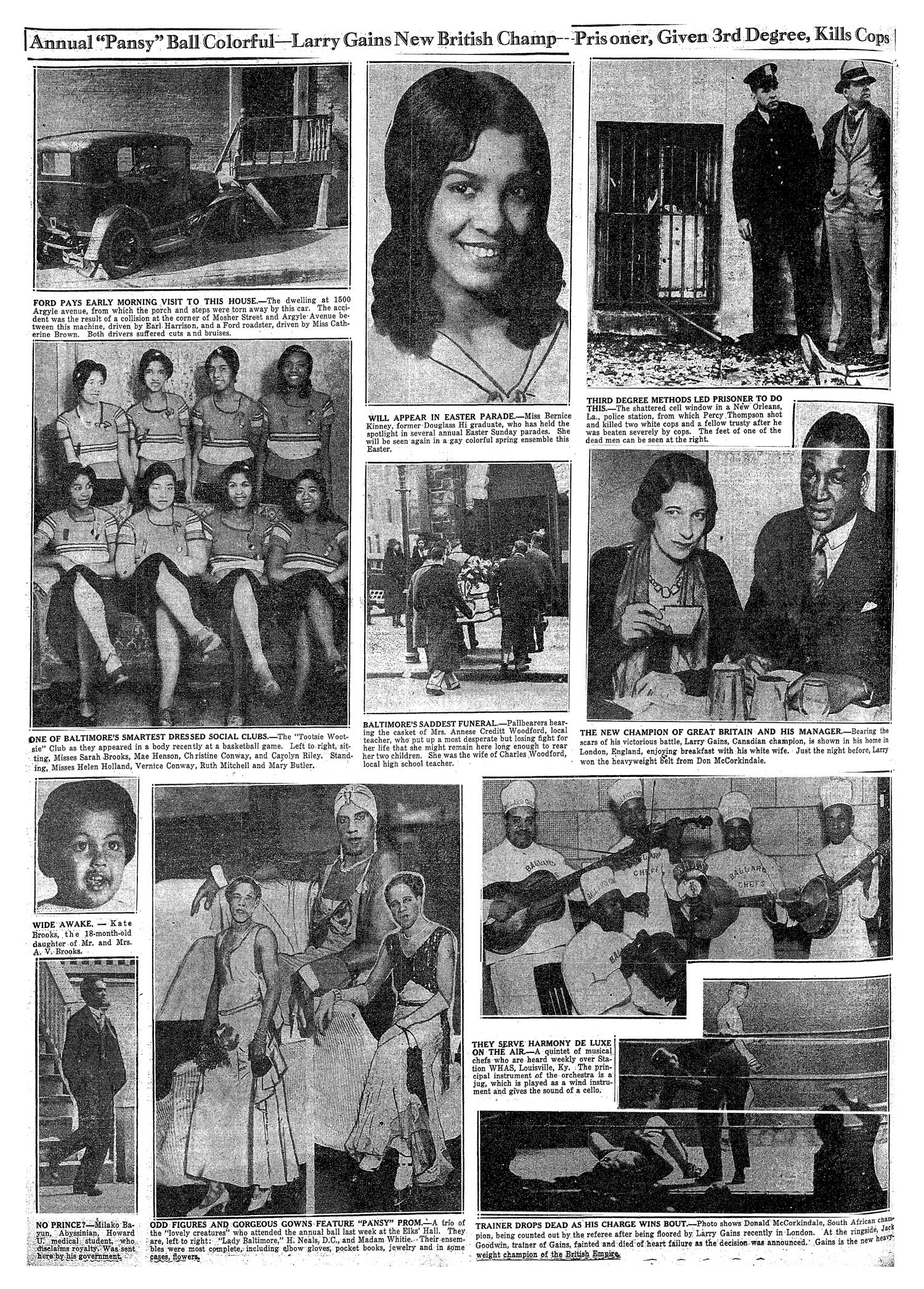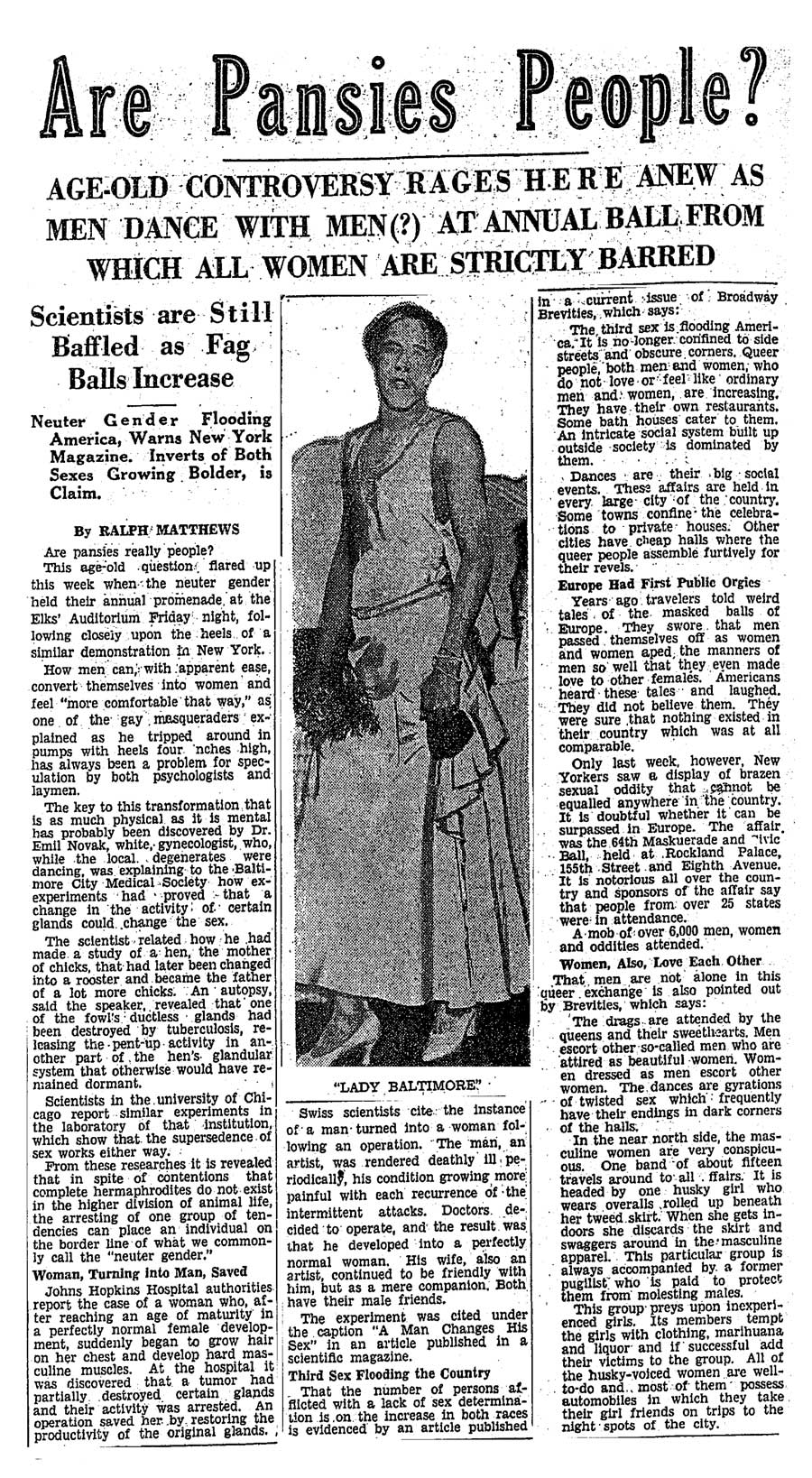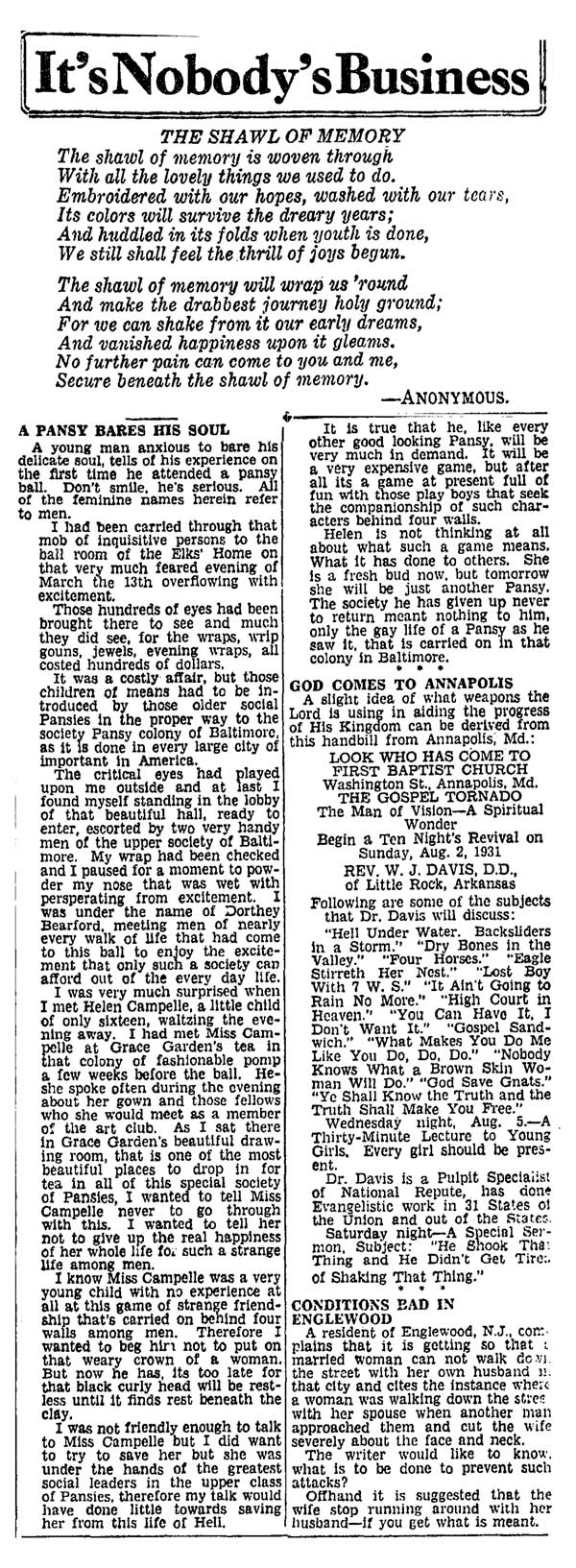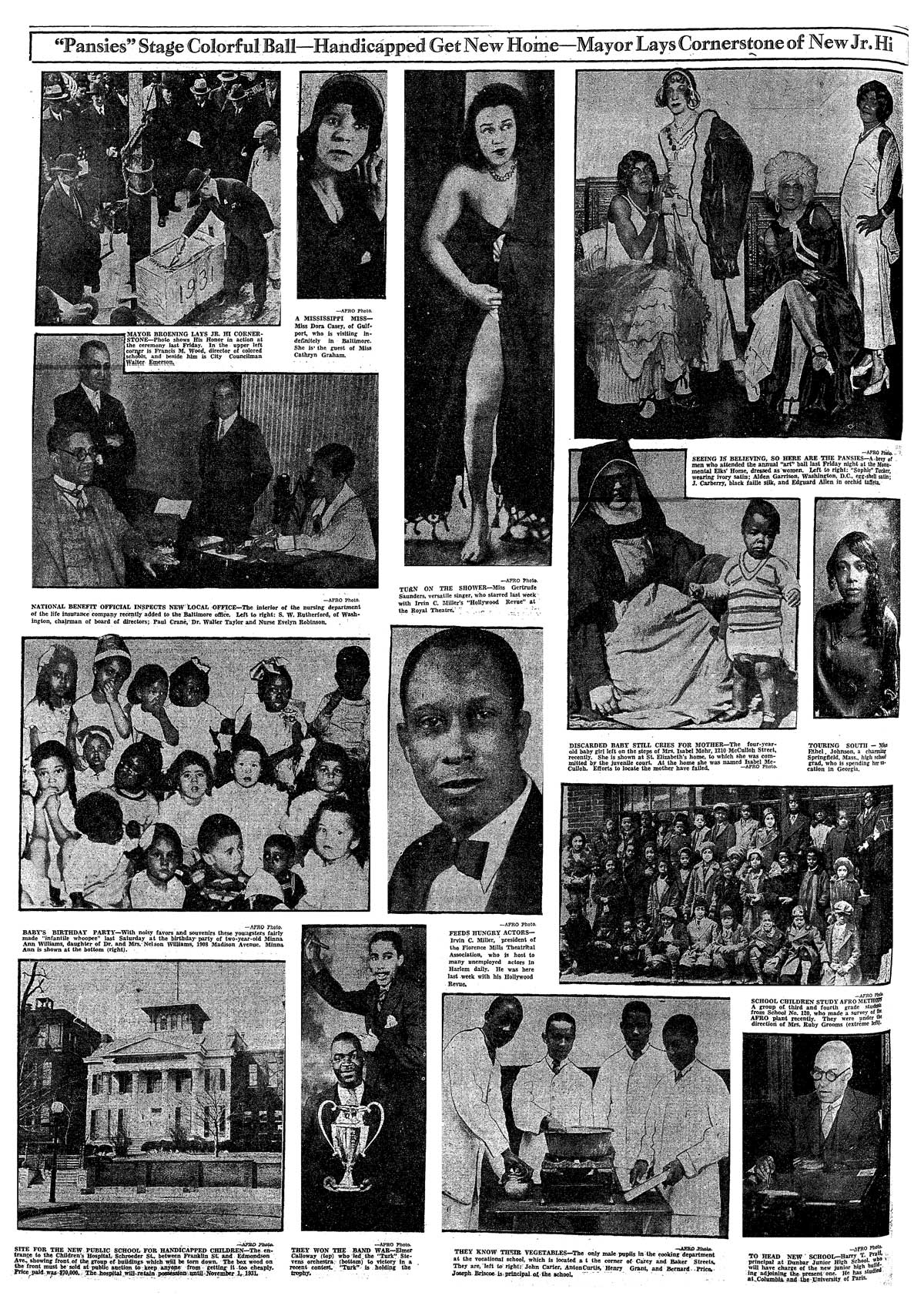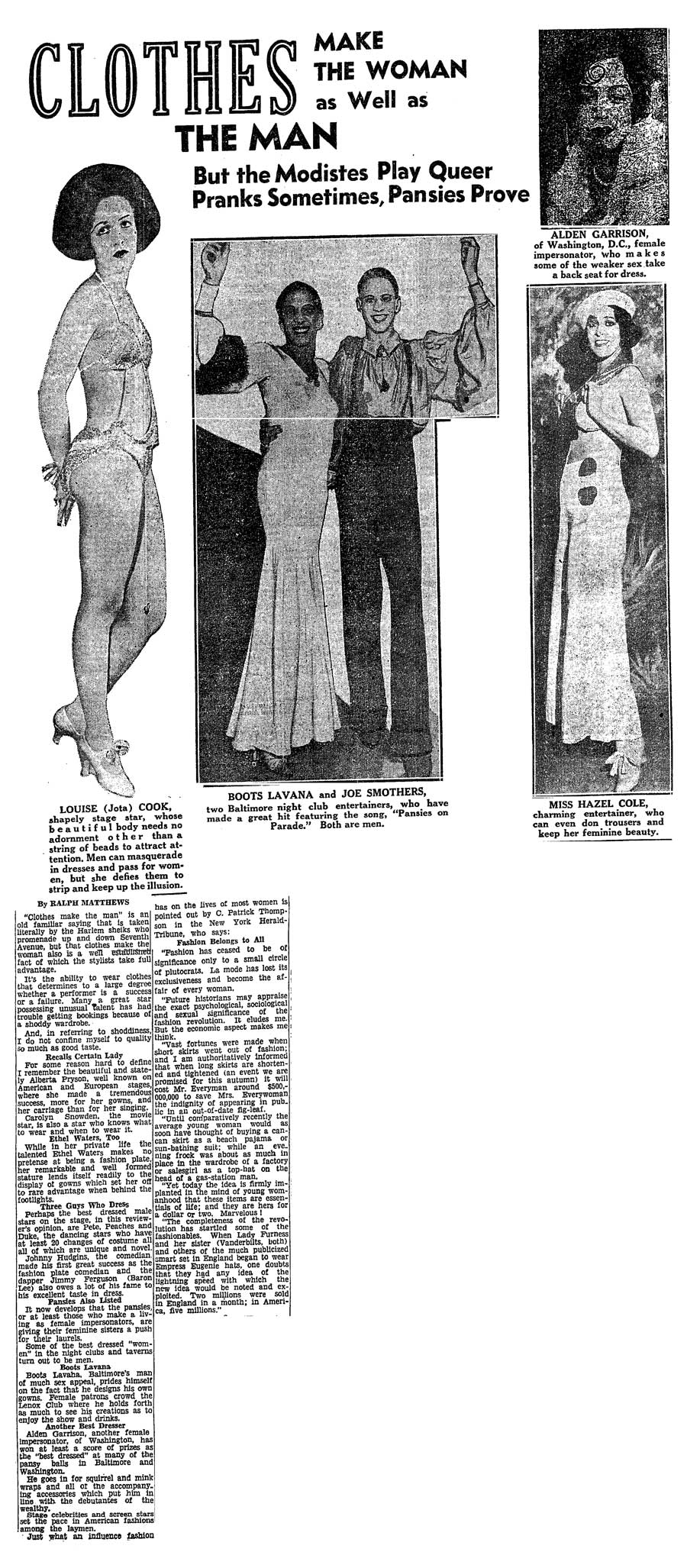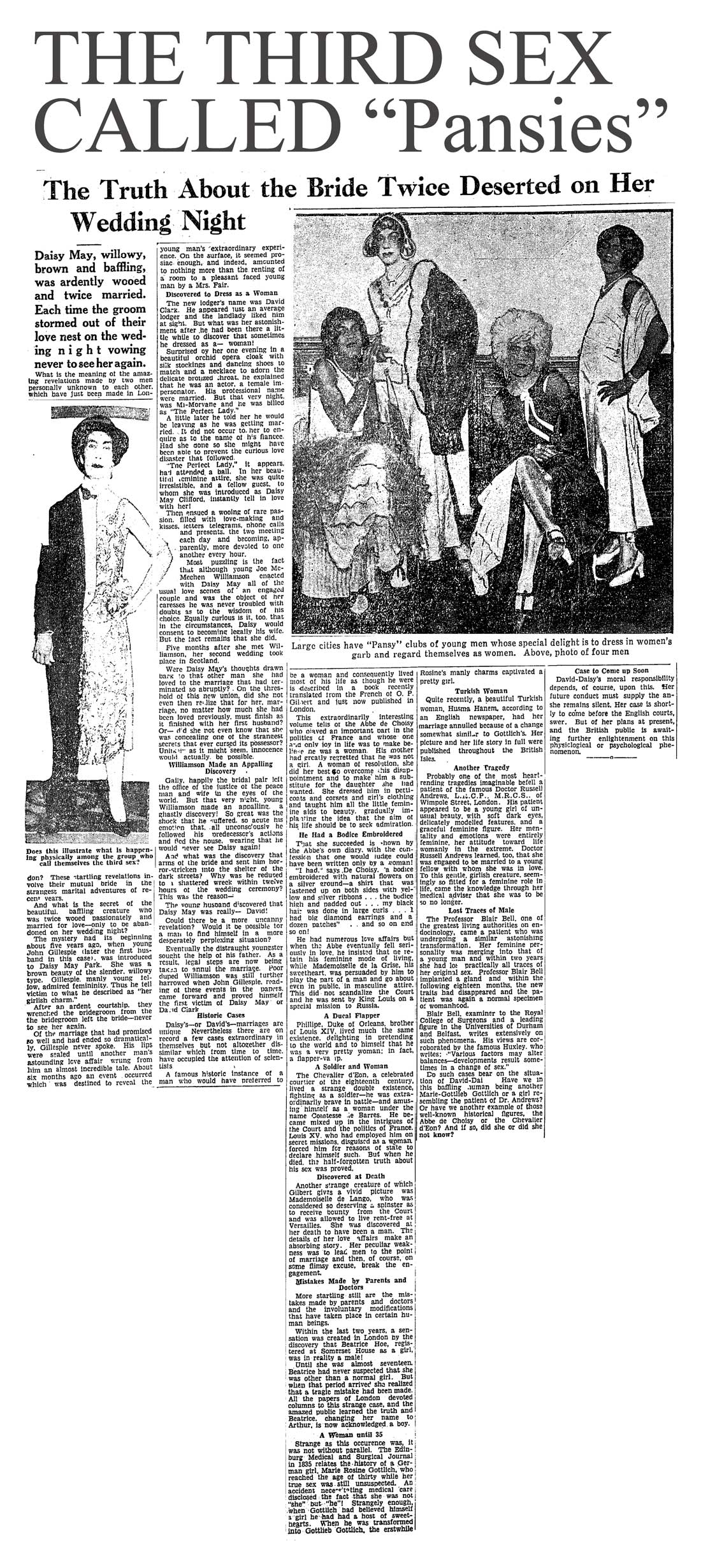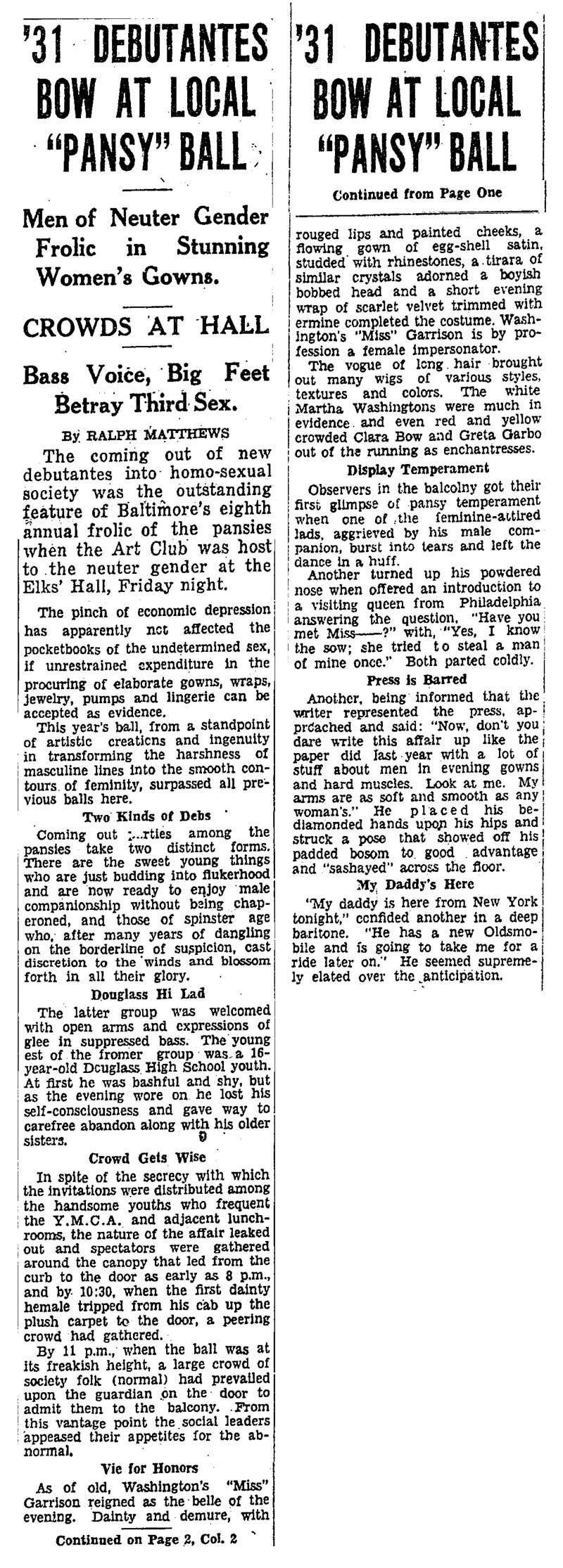1930s Pansy Craze
1930s
Pansy Craze
These Baltimore Afro American articles, covering the city’s drag balls, were written during the “pansy craze,” a period in the late 1920s and 1930s during which sexually non-normative clubs and performers (known as pansies) experienced a surge in popularity in the United States.
CONTENT NOTE: the ball cultures of the 1930s produced communities of gender and sexual diversity as well as racialized spectacles for outside audiences. The Afro American articles were written by outsiders who often demeaned and misgendered ball performers. This points to the importance of reading these articles “against the grain.” In other words, reading them against the interests of the original authors. Because so much of the archive available to queer historians is written by people who judge, police, and condemn nonnormative sexual and gender expression, reading against the grain is one of our key methodological strategies.
Articles are reproduced courtesy of The AFRO American Newspaper and AFRO Charities.
The image below and detail above are from “’Pansie’s’ Stage Colorful Ball,” Baltimore Afro-American; Mar 21, 1931; pg. 10. The original caption reads: “A bevy of men who attended the annual ‘art’ ball last Friday night at the Monumental Elks’ Home, dressed as women. Left to right: ‘Sophie’ Tucker, wearing ivory satin; Alden Garrison, Washington D.C., egg-shell satin; J. Carberry, black faille silk, and Edguard Allen in orchid taffeta.”
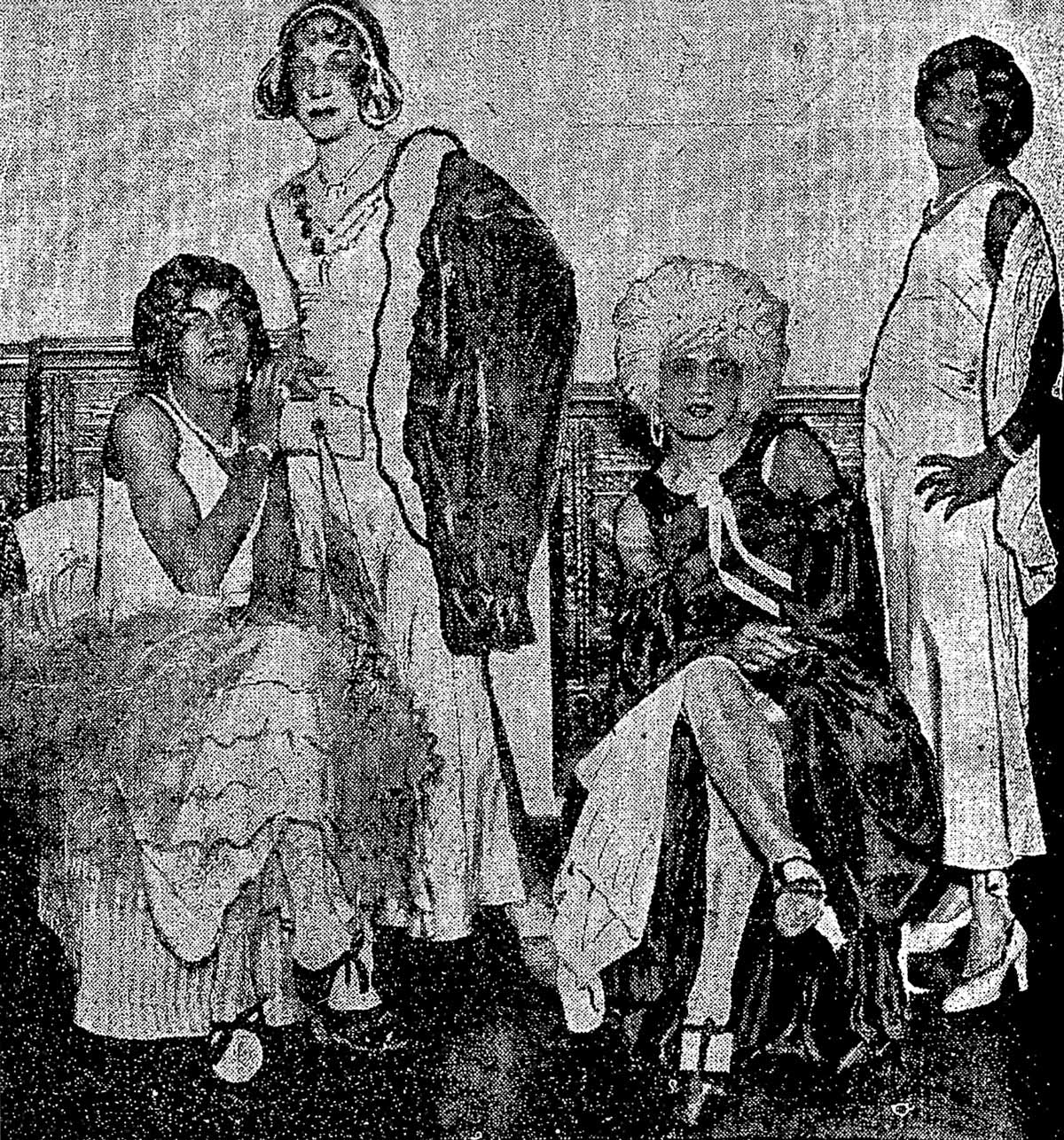
Depression Chief Guest at Pansy Ball: Annual Drag of Twilight Men Not as Elaborate this Year
Afro-American (1893-1988); Mar 26, 1932; ProQuest Historical Newspapers: The Baltimore Afro-American pg. 23
Stage Theatrical World Screen: Margo a Philosophical Pansy tell of Loves, Woes, and Jealousies of Third Sex. Young Intellectual Sees Masquerade Ball as Forerunner of a Womanless World
Afro-American (1893-1988); Mar 7, 1936; ProQuest Historical Newspapers: The Baltimore Afro-American pg. 10
Annual “Pansy”‘ Ball Colorful–Larry Gains New British Champ Prisoner, Given 3rd Degree, Kills Cops
Afro-American (1893-1988); Mar 26, 1932; ProQuest Historical Newspapers: The Baltimore Afro-American pg. 12
Stage Theatrical World Screen: Margo a Philosophical Pansy tell of Loves, Woes, and Jealousies of Third Sex. Young Intellectual Sees Masquerade Ball as Forerunner of a Womanless World
Afro-American (1893-1988); Mar 7, 1936; ProQuest Historical Newspapers: The Baltimore Afro-American pg. 10
It's Nobody's Business: The Shawl of Memory
Afro-American (1893-1988); Sep 12, 1931; ProQuest Historical Newspapers: The Baltimore Afro-American pg. 15
“Pansie’s” Stage Colorful Ball–Handicapped Get New Home–Mayor Lays Cornerstone of New Jr. Hi
Afro-American (1893-1988); Mar 21, 1931; ProQuest Historical Newspapers: The Baltimore Afro-American pg. 10




